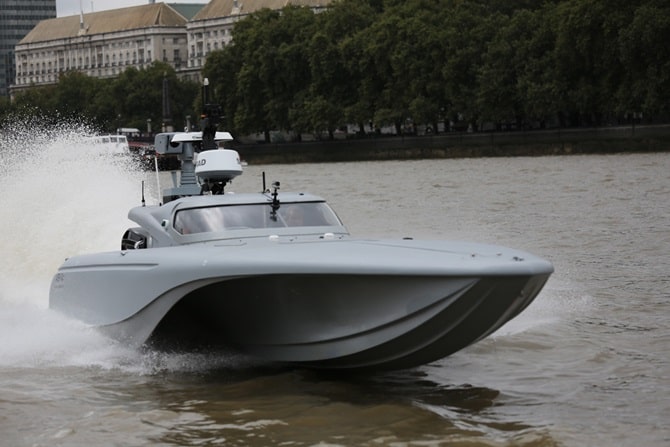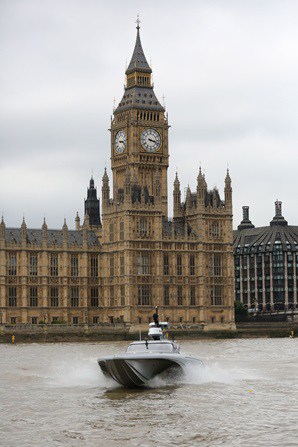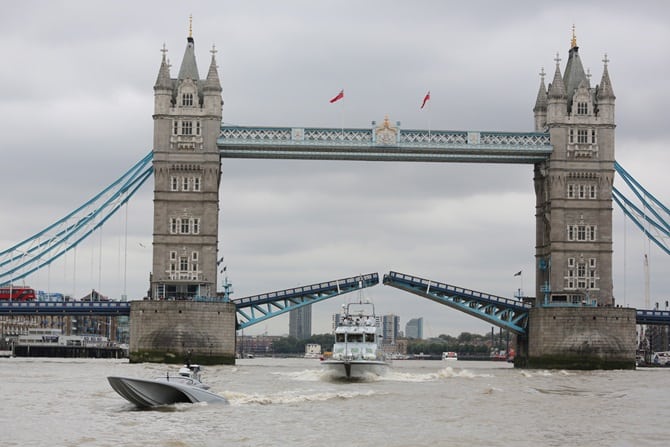
Developed by Portchester-based ASV with funding from the Defence Science and Technology Laboratory (Dstl), the 32ft unmanned surface vessel (USV) uses the Bladerunner hull shape. It is planned that MAST will be a test platform for a range of autonomous technologies and systems that the Ministry of Defence is exploring.
“This is a chance to take a great leap forward in maritime systems,” said Fleet Robotics Officer Commander Peter Pipkin. “Not to take people out of the loop, but to enhance everything they do, to extend our reach, our look, our timescales, our efficiency using intelligent and manageable robotics at sea.”

MAST is able to operate autonomously in an unmanned mode, sensing and avoiding other vessels in its vicinity. Avoidance algorithms are designed to comply with internationally mandated collision regulations, but when operating on a busy waterway - such the Thames - a coxswain is on board ready to take control if necessary. Its primary function is surveillance and reconnaissance, and it does not carry weapons.
The vessel will be one of 40 autonomous systems participating in the upcoming Unmanned Warrior event, due to take place off the coast of Wales and NW Scotland this autumn. According to the Royal Navy, Unmanned Warrior will be the biggest ever event of its kind, and should provide lessons that will help shape the future of naval warfare.

“The growing scale of Unmanned Warrior is a clear demonstration of the Royal Navy’s ambition to lead and win through technological innovation,” said Admiral Sir Philip Jones, First Sea Lord and Chief of Naval Staff.
"Unmanned maritime systems will change how we operate, but they’re just the start. Our pursuit of new technologies and ideas – from big data to 3D-printing – will ensure we remain one of the most capable and successful navies in the world.”





April 1886: the Brunkebergs tunnel
First ever example of a ground source heat pump?